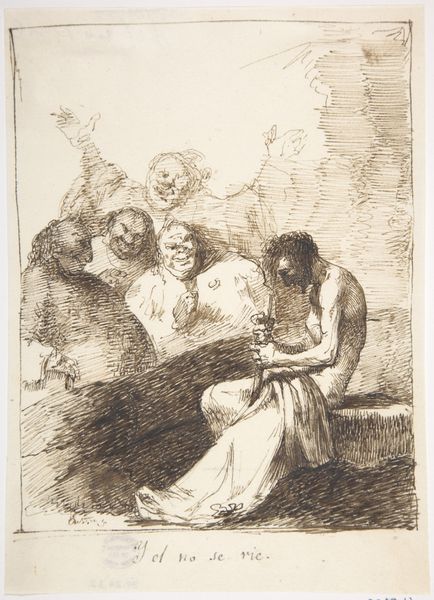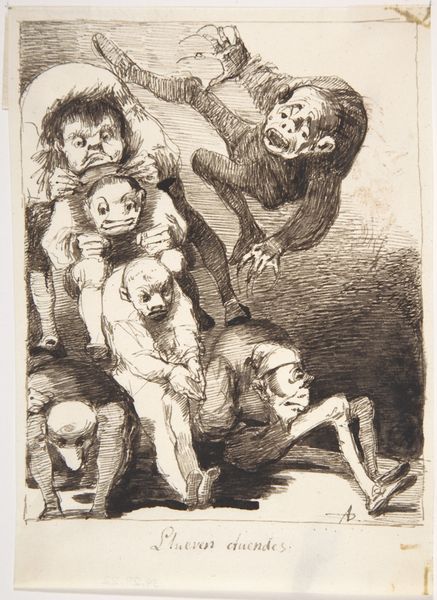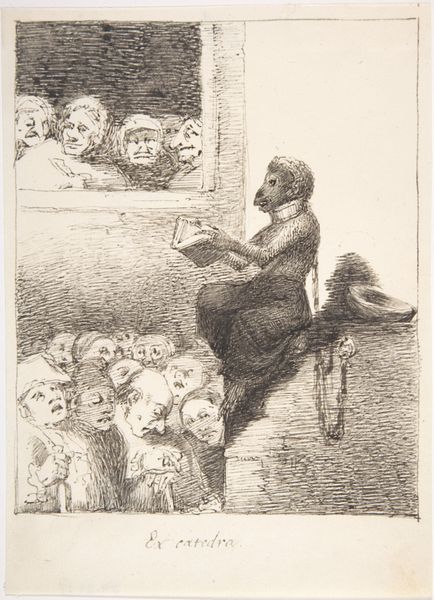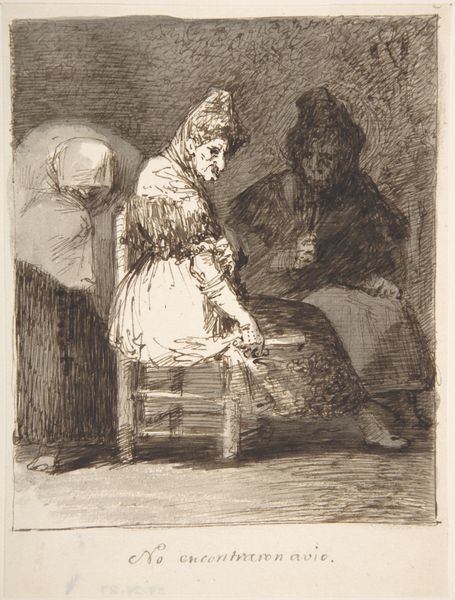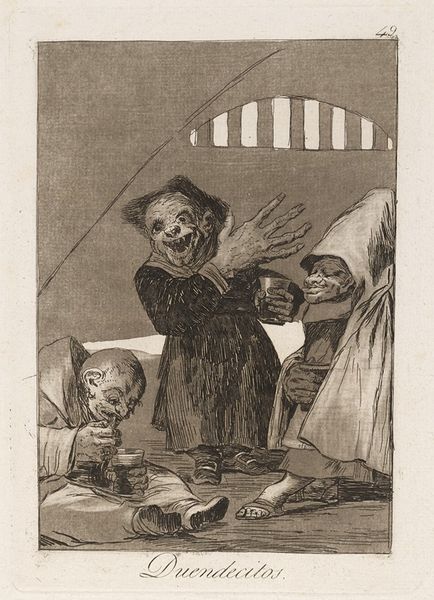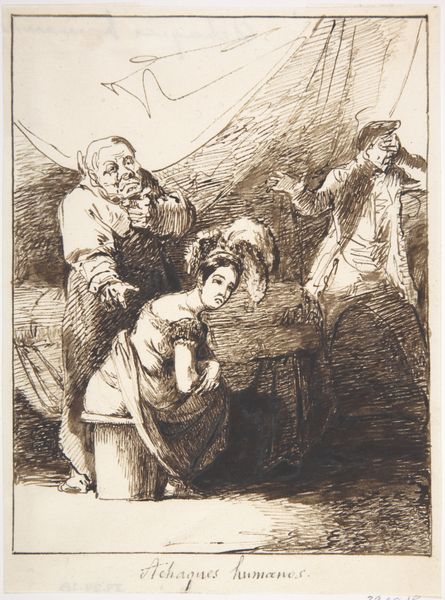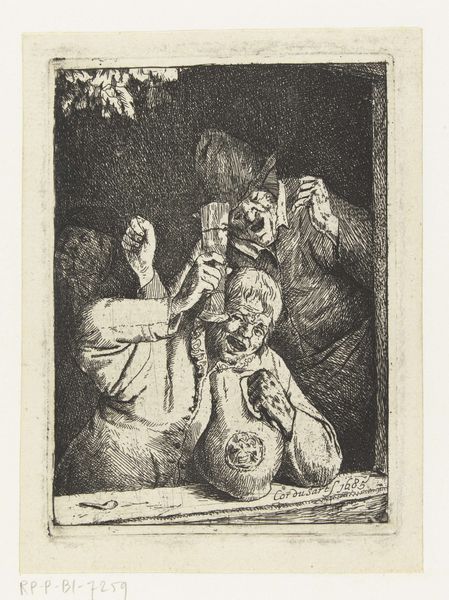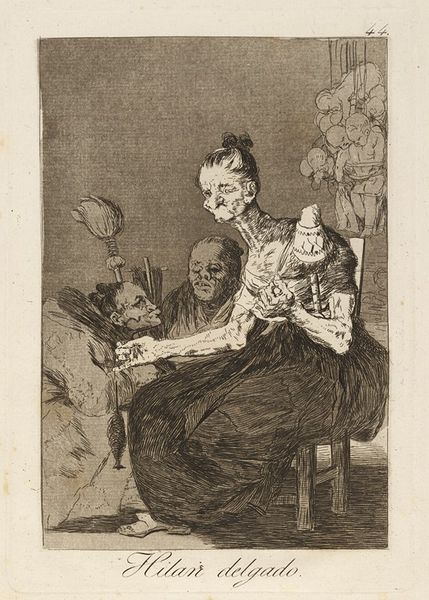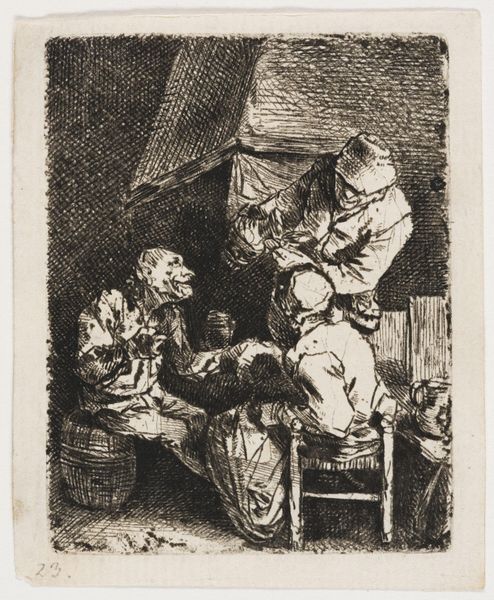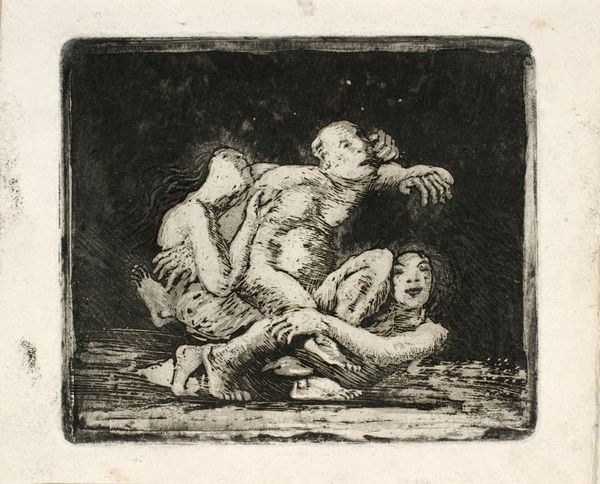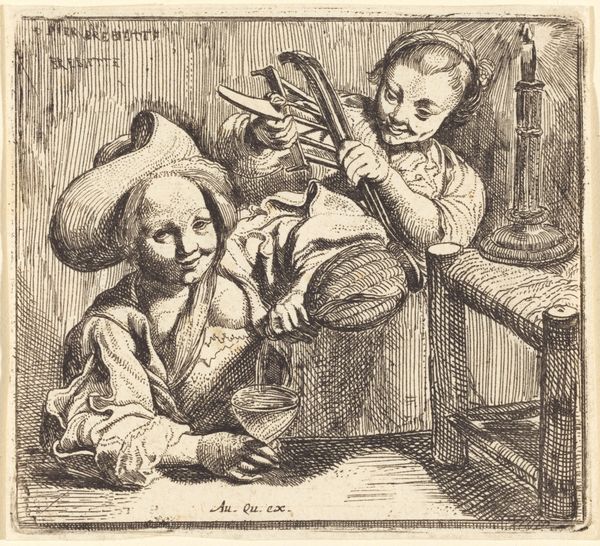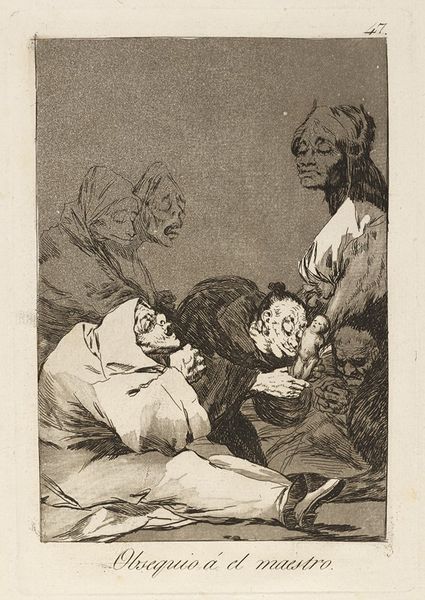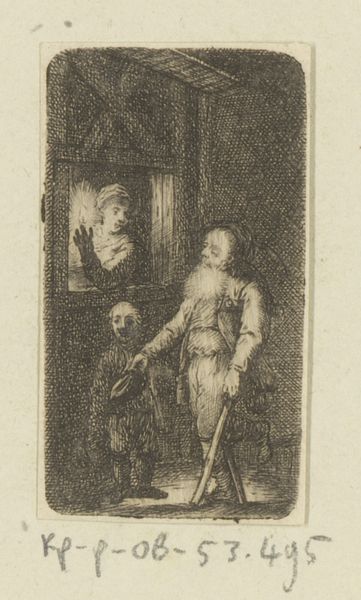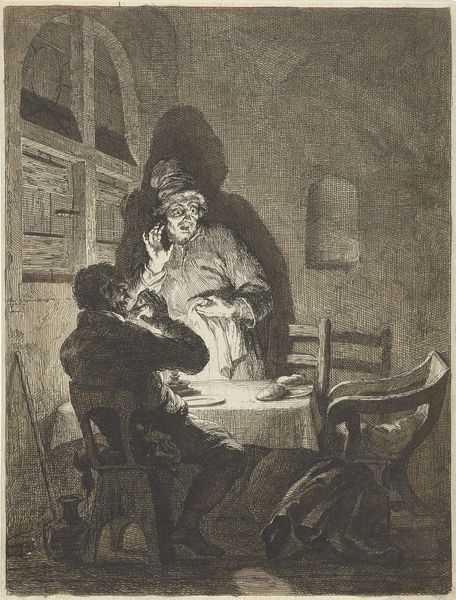
Dust to Dust ("Et in pulverem reverteris") 1807 - 1845
0:00
0:00
drawing, print, etching, intaglio
#
pencil drawn
#
drawing
# print
#
pen sketch
#
etching
#
caricature
#
intaglio
#
pencil sketch
#
pencil drawing
#
history-painting
Dimensions: 7-1/8 x 5-1/8 in. (18.1 x 13.0 cm)
Copyright: Public Domain
Curator: I find myself deeply unnerved, yet strangely fascinated, by this image. It feels like a shadowy glimpse into a forgotten nightmare. Editor: That's Leonardo Alenza’s "Dust to Dust", also known as "Et in pulverem reverteris," likely created sometime between 1807 and 1845. It's currently held here at the Metropolitan Museum. Alenza employed etching and other intaglio techniques. Curator: "Dust to Dust"—oh, the delicious irony. I mean, just look at them! Are they consuming something, or being consumed? There’s a macabre playfulness in how these ghoulish figures are rendered. Editor: What's striking to me is Alenza's technique. The dense cross-hatching and varied line weights creates not only the darkness you noted but also this tactile sense. The etching process itself mirrors the gradual decay the image implies, doesn't it? Acid eating away at the metal plate, mimicking the slow decomposition of flesh. Curator: Exactly! It is like the tools and methods somehow conspired to underscore the artwork’s message! I imagine Alenza hunched over that plate, scratching away, his breath fogging the metal as he conjured these specters. It must've been such intimate work. I mean, in that moment of making, don't you think, he met his own mortality? Editor: Certainly. Alenza uses caricature here not just for simple comic effect but to really amplify the ugliness, the *material* consequences, if you will, of time's passage. What might be easily consumed as high-art suddenly becomes an embodied social commentary. He's showing us how the supposed levity in caricatures turns abject. Curator: So true! It's both repulsive and beautiful, wouldn't you say? And as we ponder that, time continues its own etching work, and we ourselves inch closer to that dust. Editor: Absolutely. Looking at Alenza’s labor here allows us to rethink what we're consuming as fine art. His hand makes our hand tremble—not at death itself, but mortality-as-commodity, the grim economics of decline.
Comments
No comments
Be the first to comment and join the conversation on the ultimate creative platform.
